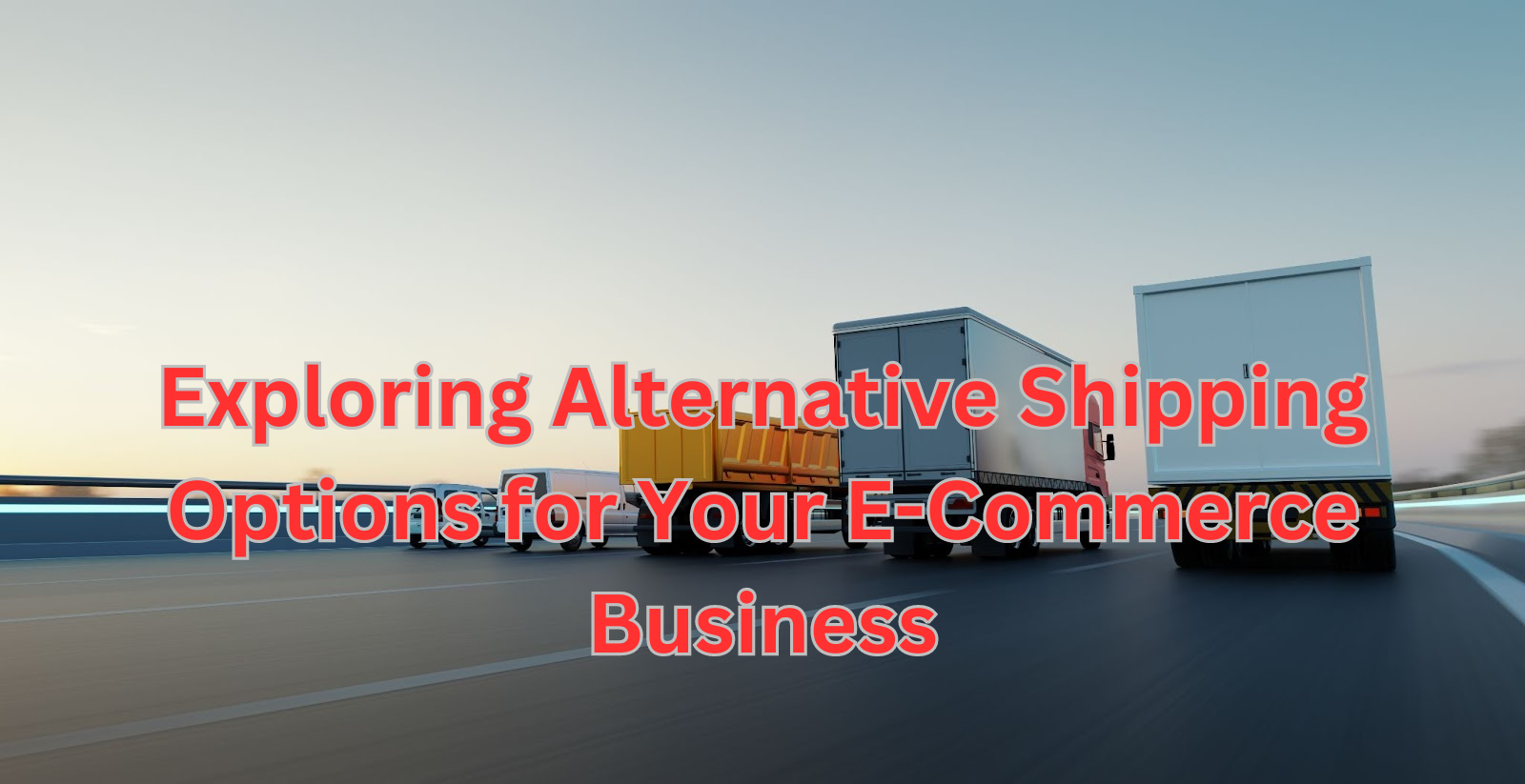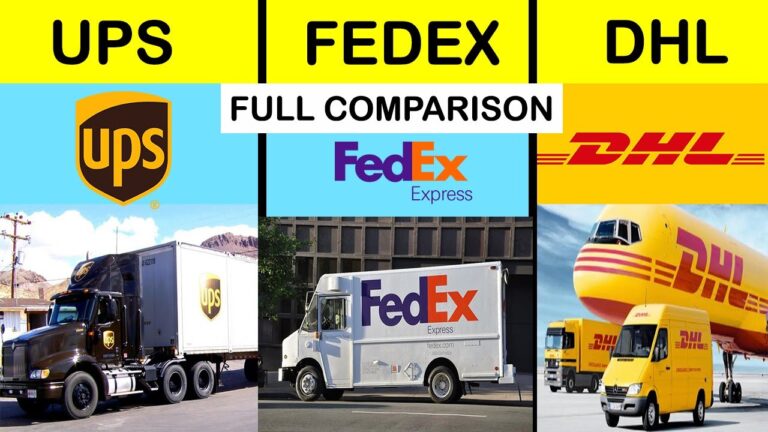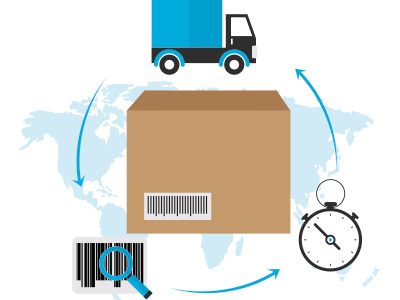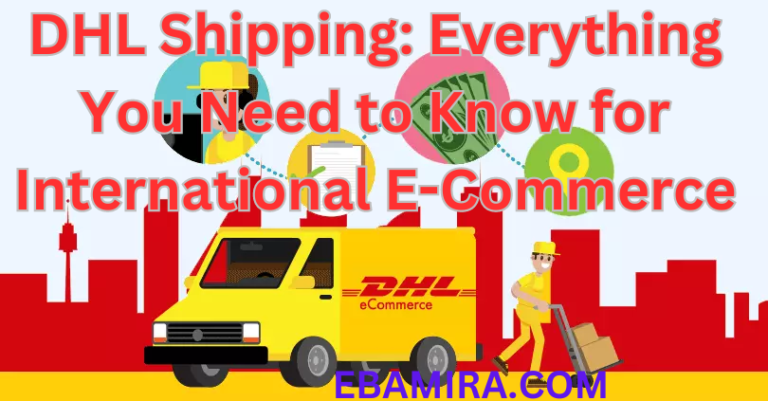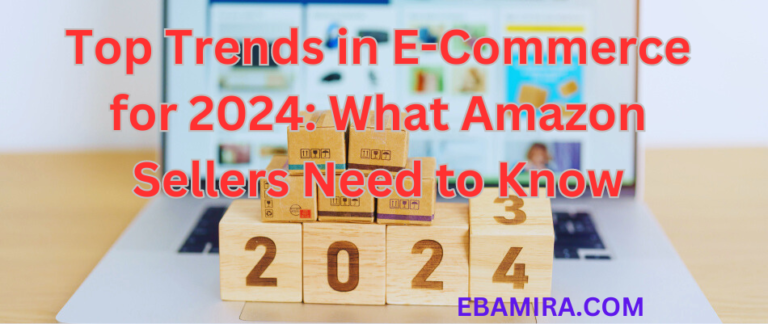Navigating Alternative Shipping Solutions for Your E-Commerce Venture: A Comprehensive Guide
In the fast-paced world of e-commerce, shipping logistics stand as a cornerstone for success. Efficient shipping not only impacts customer satisfaction but also plays a pivotal role in shaping your brand’s reputation and bottom line. While traditional shipping methods have long been the norm, innovative technologies and evolving consumer demands have paved the way for alternative shipping solutions. In this comprehensive guide, we’ll delve into various alternative shipping options tailored to suit the diverse needs of your e-commerce business.
Chapter 1: Understanding the Importance of Shipping in E-Commerce
1.1. The Role of Shipping in Customer Experience 1.2. Impact of Shipping on Business Operations 1.3. Factors Influencing Shipping Decisions
Chapter 2: Exploring Traditional Shipping Methods
2.1. Overview of Traditional Shipping Carriers 2.2. Pros and Cons of Traditional Shipping 2.3. Challenges Faced by E-Commerce Businesses with Traditional Shipping
Chapter 3: Embracing Alternative Shipping Solutions
3.1. Introduction to Alternative Shipping Methods 3.2. Benefits of Alternative Shipping for E-Commerce 3.3. Environmental Sustainability in Alternative Shipping
Chapter 4: Diving into Specific Alternative Shipping Options
4.1. Same-Day and Next-Day Delivery Services 4.2. Crowdshipping and Peer-to-Peer Delivery 4.3. Locker Delivery and Click-and-Collect Services 4.4. Subscription Box Delivery Models 4.5. Self-fulfillment and In-house Shipping
Chapter 5: Integrating Technology for Streamlined Shipping Processes
5.1. Role of Technology in Alternative Shipping 5.2. Implementing Tracking and Visibility Solutions 5.3. Utilizing Route Optimization Software 5.4. Leveraging Automation for Order Fulfillment
Chapter 6: Overcoming Challenges and Considerations
6.1. Cost Considerations in Alternative Shipping 6.2. Regulatory and Legal Implications 6.3. Maintaining Consistency and Reliability 6.4. Customer Communication and Transparency
Chapter 7: Case Studies: Successful Implementation of Alternative Shipping
7.1. Case Study 1: How Company X Increased Customer Satisfaction with Same-Day Delivery 7.2. Case Study 2: The Journey of Company Y in Implementing Self-Fulfillment 7.3. Case Study 3: Environmental Impact Reduction Through Innovative Shipping Practices
Chapter 8: Best Practices for Choosing the Right Shipping Strategy
8.1. Assessing Your Business Needs and Customer Expectations 8.2. Conducting Cost-Benefit Analysis 8.3. Building Flexibility into Your Shipping Strategy 8.4. Monitoring and Adjusting Your Approach Over Time
Chapter 9: Shaping the Future of E-Commerce Shipping
The landscape of e-commerce shipping is evolving rapidly, and embracing alternative shipping solutions has become imperative for businesses aiming to thrive in this competitive environment. By understanding the diverse range of options available, leveraging cutting-edge technology, and prioritizing customer satisfaction, your e-commerce venture can embark on a journey towards shipping excellence, ensuring long-term success and growth in the dynamic world of online retail.
Chapter 10: The Future of Alternative Shipping in E-Commerce
10.1. Emerging Trends and Innovations in Alternative Shipping 10.2. Integration of Sustainable Practices in Shipping Operations 10.3. Potential Impact of Drone and Autonomous Vehicle Delivery 10.4. Personalization and Customization in Shipping Experiences
As technology continues to advance and consumer expectations evolve, the future of alternative shipping in e-commerce holds boundless possibilities. From the integration of artificial intelligence for predictive shipping to the utilization of blockchain technology for enhanced supply chain transparency, businesses are poised to revolutionize the way goods are delivered to consumers.
Furthermore, the emphasis on sustainability and eco-friendly practices is expected to drive the adoption of greener shipping methods, such as carbon-neutral delivery options and the use of renewable energy sources for transportation.
Moreover, with the ongoing experimentation and regulatory advancements in drone and autonomous vehicle delivery, we may soon witness a shift towards faster and more efficient last-mile delivery solutions, transforming the e-commerce landscape yet again.
In this ever-evolving ecosystem, agility and adaptability will be key attributes for e-commerce businesses seeking to stay ahead of the curve. By remaining vigilant of emerging trends, investing in innovation, and continuously refining their shipping strategies, companies can position themselves as pioneers in the realm of alternative shipping, shaping the future of e-commerce delivery.
Chapter 11: Implementing Actionable Insights from Alternative Shipping Strategies
11.1. Conducting Market Research and Benchmarking Studies 11.2. Collaborating with Industry Partners and Logistics Experts 11.3. Piloting New Shipping Initiatives and Analyzing Performance Metrics 11.4. Soliciting Feedback from Customers and Incorporating Improvements
By actively engaging in these strategic activities, e-commerce businesses can leverage the insights gained from alternative shipping strategies to drive operational efficiency, enhance customer satisfaction, and ultimately, achieve sustainable growth in the competitive online marketplace.
Chapter 12:
Exploring alternative shipping options for your e-commerce business is not merely a choice but a strategic imperative in today’s dynamic marketplace. By embracing innovation, leveraging technology, and prioritizing customer-centricity, you can navigate the complexities of shipping logistics with confidence and drive long-term success for your venture.
Remember, the journey towards shipping excellence is an ongoing process, and by remaining agile, adaptable, and forward-thinking, you can position your e-commerce business for sustained growth and profitability in the ever-evolving landscape of online retail.
Chapter 13: Key Takeaways and Actionable Steps
13.1. Prioritize Customer Satisfaction: Ensure that your shipping strategy aligns with the expectations and preferences of your target audience. Consider offering flexible delivery options, transparent tracking, and seamless communication to enhance the overall shopping experience.
13.2. Embrace Innovation: Stay abreast of emerging trends and technologies in the shipping industry. Explore opportunities to integrate automation, artificial intelligence, and sustainable practices into your shipping operations to drive efficiency and reduce environmental impact.
13.3. Optimize Costs: Conduct regular cost-benefit analyses to evaluate the financial viability of alternative shipping solutions. Look for ways to optimize shipping expenses without compromising service quality, such as negotiating rates with carriers, consolidating shipments, or leveraging bulk discounts.
13.4. Focus on Sustainability: Commit to reducing the carbon footprint of your shipping operations by exploring eco-friendly packaging materials, optimizing delivery routes to minimize fuel consumption, and investing in renewable energy sources for transportation.
13.5. Monitor Performance: Implement robust tracking and analytics tools to monitor the performance of your shipping initiatives. Continuously evaluate key metrics such as delivery times, shipping costs, and customer satisfaction scores to identify areas for improvement and optimization.
Chapter 14: Resources and Further Reading
14.1. Industry Reports and Whitepapers: Access in-depth research and analysis on the latest trends and developments in e-commerce shipping from reputable sources such as industry associations, consulting firms, and market research agencies.
14.2. Online Forums and Communities: Join online forums, discussion groups, and social media communities dedicated to e-commerce logistics and shipping. Engage with fellow industry professionals, share insights, and learn from the experiences of others in the field.
14.3. Webinars and Workshops: Attend virtual webinars, workshops, and seminars hosted by logistics experts, shipping carriers, and technology providers. Gain valuable insights into best practices, emerging technologies, and innovative strategies for optimizing your shipping operations.
14.4. Training and Certification Programs: Invest in training and certification programs focused on e-commerce logistics, supply chain management, and shipping best practices. Equip yourself and your team with the knowledge and skills needed to excel in the fast-paced world of online retail.
